This piece is part of the Taiwan-U.S. Quarterly Analysis series, which features the original writings of experts with the goal of providing a range of perspectives on developments relating to Taiwan.
In 2021, most experts saw the Taiwan Strait as a simmering problem, but they agreed that the odds of war occurring in the coming years were low. Despite a growing trend of jets from the People’s Republic of China (PRC) flying into Taiwan’s Air Defense Identification Zone, few saw conflict in the Taiwan Strait as imminent. Three years later, the headlines have changed. There are now many examples of news reports and statements by experts, retired military officials, and political leaders in the United States that support the view that the Taiwan Strait is headed toward active conflict. Two events are often cited as catalysts for heightened tensions in the Strait and the resulting uptick in global concern about the possibility of conflict: the sharp escalation in PRC military pressure that followed former Speaker of the House Nancy Pelosi’s visit to the island in summer 2022, and Taiwan’s January 2024 presidential and legislative elections. Concern is especially heightened now, as Taiwan’s new president, William Lai, begins his term. Pelosi’s visit to Taiwan was intended as a show of U.S. support for Taiwan, but PRC leaders—noticing the speaker’s position as third-in-line to the presidency—viewed it as a major upgrade in U.S.-Taiwan relations. The PRC decided to substantially increase the intensity and frequency of its demonstrations of military force in the Taiwan Strait to show its opposition. Some would argue the visit was a pretext for an escalation the PRC was happy to make, but even so, the United States provided that pretext. Whether Pelosi’s visit was a net good or bad for Taiwan and regional security, there is no question that it was followed by a qualitative and quantitative change in how the PRC threatens Taiwan with military force. Since Pelosi’s visit, threats from the PRC have continued to change in type: the PRC is using more deadly military aircraft and other types of military tools to threaten Taiwan from its side of the midline of the Strait, which the PRC military now crosses regularly, with little apparent hesitation. The frequency of these threats also hit new levels, with more threats coming from the PRC since 2022 than in any previous period. Inevitably, Taiwan’s change in leadership will reshape its domestic politics and international relations. During the 2024 presidential campaign, Lai, along with all the other presidential candidates, tried his best to convince the Taiwanese public that he was the candidate most able to steer Taiwan in a safe direction; however, Beijing remains unmoved. Although Lai has promised continuity and consistency with his predecessor Tsai Ing-wen’s foreign policy direction, the PRC is even less inclined to work with Lai than it was with Tsai, and it has shown no willingness to speak to any other leader from their party, the Democratic Progressive Party (DPP). In short, the military and the political situation in the Taiwan Strait is more tense today than it was three years ago. But how is this rising tension perceived in Taiwan? In 2021, we conducted a survey of 1,000 Taiwanese respondents asking them their perceptions of PRC threats, the likelihood of war, and whether or not they thought Taiwan was able to defend itself. In October 2023, during the most recent presidential election cycle, we repeated the same survey (n=1200). Given the PRC reaction to Pelosi’s visit and the impending change in Taiwan’s leadership, we wanted to understand whether Taiwanese voters were more or less worried about war than they were two years earlier, before these major changes. Here is what we found.
Results
Despite the significant increase in PRC military activity in the Strait—a trend foreign observers worry could lead to war—we find a modest increase in worry about war in the Strait among our Taiwanese respondents. In 2021, 57.4% of respondents said they were worried, while in 2023 64.8% of respondents reported that same worry. While this increase of 7.4 percentage points is meaningful, we don’t see it as a spike or sea change in the level of concern among Taiwanese respondents.
This finding is consistent with what many Taiwan analysts have come to know about Taiwanese perceptions of war: Taiwanese have been concerned about war for decades, but that worry does not dominate their daily lives. Even though the likelihood of war objectively appears much higher now than it was in 2021, Taiwanese are not panicking. Given the rising tensions, we may also be seeing a “diminishing marginal return” effect for PRC military pressure. If the changes following Pelosi’s visit and uncertainty about how the two sides will navigate Taiwan’s leadership change provoke only modest additional worry about potential war, then perhaps we are seeing a ceiling effect in how scared Taiwanese will be about the possibility of war breaking out.
Some analysts have hypothesized that Taiwanese citizens’ seemingly calm responses to PRC threats are due to their being unaware or ignorant of the changes in PRC threats. We also tested this question in 2021 by asking whether Taiwanese respondents were aware of the growing threat from the PRC. As in 2021, our 2023 results show a strong awareness of the PRC’s recent military activity among our respondents. Almost as many acknowledge rising tensions in 2023 as did so in 2021 (a decline of 3.7 percentage points). What accounts for that change is the proportion of respondents who thought the level of threat was consistent in the period just before the survey, which rose by 3.3 percentage points. In both years, barely 1% of respondents thought that threats decreased in the six months before the survey. In short, despite concern abroad that Taiwanese are unaware or do not care about PRC threats, we find that Taiwanese awareness of PRC threats is high and consistent over time.
Another change we found as we compared results from 2021 and 2023 is in respondents’ perceptions of how likely Chinese President Xi Jinping is to use force against Taiwan. The percentage who believe Xi is becoming more likely to use force increased by 10 percentage points during this period. This increase comes mostly from those who thought that Xi’s intention to use force was unchanged, while there is a small (2%) increase in those who think Xi’s intention to use force against Taiwan is declining. This result further supports our hypothesis that Taiwanese are fully aware that the threat Xi poses to Taiwan is genuinely dangerous.
One other noteworthy finding regards Taiwanese perceptions of their country’s ability to defend itself. Since 2021, Tsai has increased the duration of military conscription for Taiwanese men from four months to one year. There also has been more discussion of Taiwan’s defense capabilities since Pelosi’s visit. While we cannot say whether or not those conversations caused people to feel more confident about Taiwan’s capabilities, we do see a modest increase (7 percentage points) in those who feel Taiwan’s ability to defend itself is improving. This should be a welcome result both for Taiwan’s domestic audience and the U.S. foreign policy community. Although the institutions responsible for Taiwan’s defensive capabilities still have room for improvement, public perception of those institutions is an important factor in shaping civilians’ response to a military conflict. This small but meaningful increase is a positive sign.
Conclusion
Overall, what do our survey results say about changes in Taiwanese public opinion between 2021 and 2023? We find the level of concern about war breaking out in the Taiwan Strait to be rising, but not spiking. While there is a modest but meaningful increase in respondents’ concern that war may break out, it is not the kind of drastic increase we would expect to see if war seemed imminent. Despite big changes in the quality and quantity of PRC military activity in the Taiwan Strait, Taiwanese are not panicking. But they are paying attention.
What policy implications do these findings have for Taipei and Washington? First, both governments ought to continue to stress political, military, and economic deterrence to avoid conflict with the PRC.
In Taiwan, this means enhancing domestic defense capabilities and continued military reform. Better domestic training and more inclusive civil-military institutions that reinforce Tsai’s one-year conscription policy would likely be welcomed by Taiwanese voters. While our survey indicates an increase in public perceptions of Taiwan’s ability to defend itself, there is a large percentage of Taiwanese citizens who do not share this enthusiasm. Taipei needs to ensure it is taking concrete steps to not just improve its defensive capabilities but to also ensure that the public can see and feel these changes.
For the United States, substantive policies that give Taiwan meaningful, concrete forms of deterrence—continued defensive arms sales, trade agreements, and helping Taiwan avoid international isolation—are more important than symbolic actions.
As the PRC response to Pelosi’s visit shows, Beijing will seize upon gestures aimed at showing political support for Taiwan as justifications for accelerated military pressure. Having PRC ships and aircraft drawing ever closer to Taiwan’s water and airspace increases the cost of Taiwan’s defense, exhausts its military, and raises the chances of an accidental encounter that could result in escalation.
There already are politicians in Taiwan who claim the United States is an unreliable partner, one more interested in containing China than in protecting Taiwan’s security. U.S. policymakers need to be careful not to feed that line of argument. Taiwan has never been an unsinkable aircraft carrier from which the United States can pursue regime change in the PRC; suggesting that it might play such a role is extremely dangerous.
It’s popular in some U.S. policy circles to characterize the Taiwanese population as naively enthusiastic about Taiwanese identity and unconcerned about the potential costs of that attachment. Our data does not support those views. Taiwanese are, for the most part, pragmatic and realistic. They understand the risks they face, but they have been living with those risks for a long time. Again, they are not panicking, but they are paying attention.
Results and findings of the 2021 survey can be found in Brookings publications here, here, and here.
The Brookings Institution is committed to quality, independence, and impact.
We are supported by a diverse array of funders. In line with our values and policies, each Brookings publication represents the sole views of its author(s).
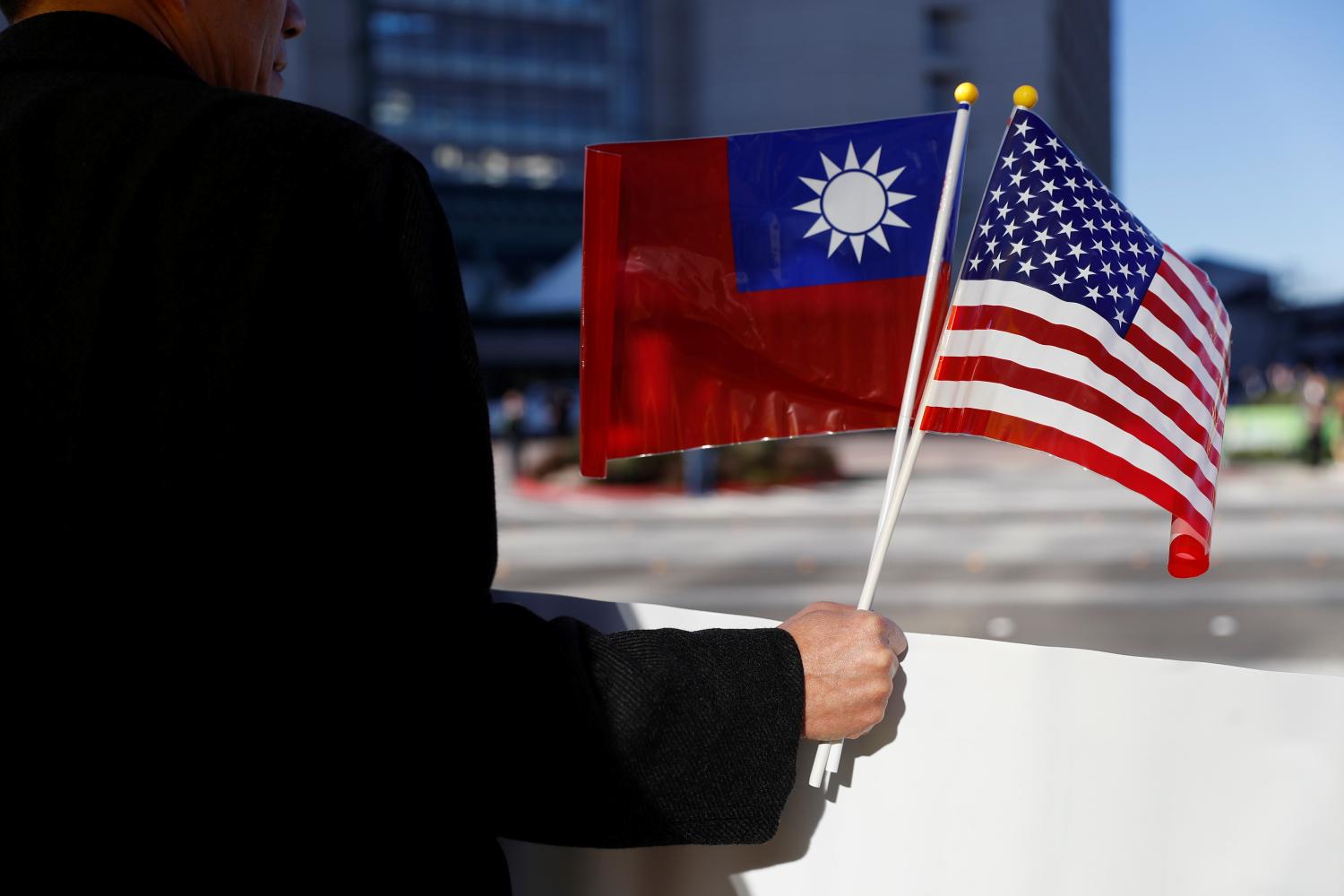




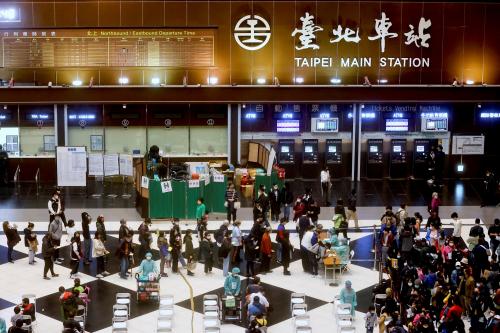
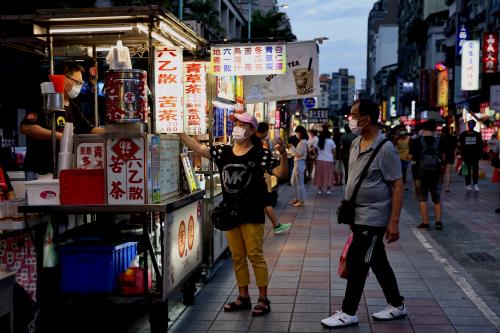

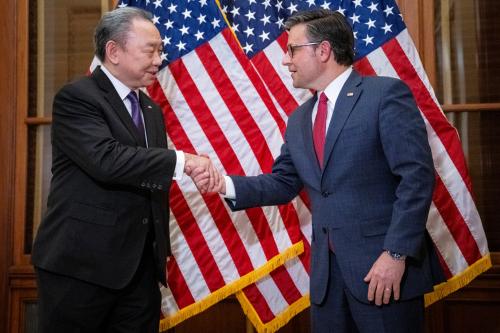
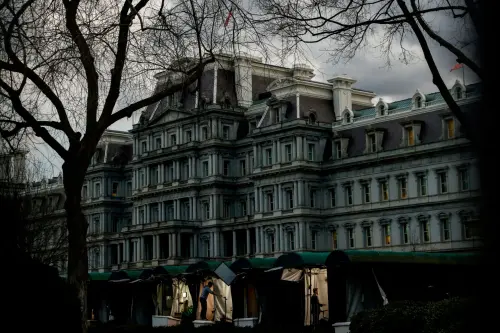
Commentary
Taiwanese perceptions of conflict: Continuity in the face of change
May 21, 2024